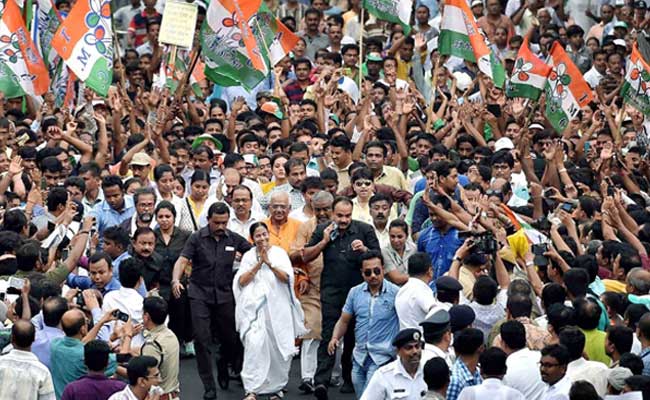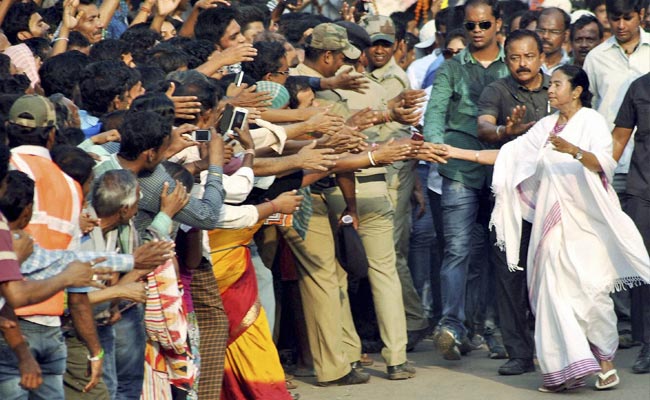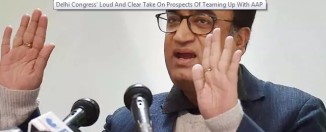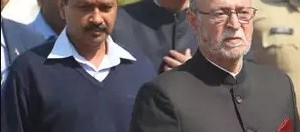To Recover, The Left Should Use Arvind Kejriwal’s Strategy
The electoral verdict in the West Bengal state elections seems to be this: The Left is dead; long live the left. By big-L Left I refer to the official Left parties, while small-l left refers to pro-poor redistributive policies that are normally associated with left-wing ideology. The triumphant reelection of the Mamata Banerjee-led Trinamool Congress (TMC) government represents the enduring appeal of pro-poor policies such as distributing subsidized rice to the poor, the kanyashree scheme for girls, bicycles for girl students and also improvements in rural infrastructure such as roads. Most polls indicated the TMC was going to win, but with a reduced margin. The TMC’s return with 27 more seats than it held surprised everybody. Whether one likes these results or not, full credit is due to the party and its leader for the electoral equivalent of a complete knockout of the opposition alliance (jot) between the Left and the Congress.In the political history of Bengal, Mamata Banerjee is the only leader after Bidhan Chandra Ray, Jyoti Basu, and Buddhadev Bhattacharya who is poised to serve as the Chief Minister of Bengal for two full terms or more. Given that the party is really a one-woman show – after all, she herself said it was she who was up for election in all 294 seats – her achievement is even more noteworth
Meanwhile the Left parties not only lost ground to the TMC, but also lost their position at the top of the pack of Opposition parties. Barring the controversial elections of 1972, this is the first election in West Bengal since Independence in which a coalition of Left parties did not secure the first or the second place. The four main parties constituting the Left Front went down from 60 seats in 2011 to 32 seats this year. The dominant partner of the Left Front, the CPI (M), now has the third highest number of seats, thereby ceding the main opposition party status to the Congress. This is a far cry from the total tally of 227 of the major Left parties in 2006, of which the CPI (M) alone had 176. That was only two elections ago, although it feels like something that happened a long time ago in a galaxy far, far away.
The triumph of the TMC was largely at the expense of the Left since all the major Left parties lost seats, whereas other opposition parties like the Congress and the BJP each gained a small number of seats. The Congress increased its tally of seats from 42 to 44, contesting in 93 seats, and raised its share of popular votes from 9% to 12%. Its alliance (jot) with the Left clearly did not cost it in terms seats or percentage of votes. The BJP opened its electoral account in the West Bengal state assembly for the first time, by winning three seats and a 10% share of the popular vote, a sharp increase from 4% in 2011. In contrast, the Left’s vote share fell from 40% to 26%! The main question is: what drove the margin of the TMC victory? Also, why did the Left do worse than even in 2011, when it was facing the massive anti-(34 year)-incumbency factor?.
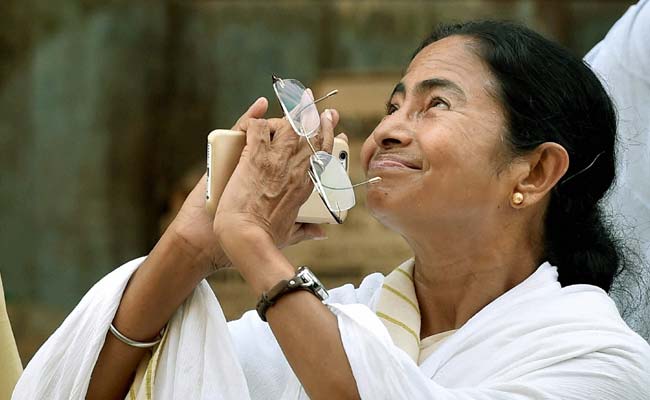 On the first question, clearly there were no strong anti-incumbency currents, let alone a wave. The conventional wisdom was that the TMC would do well in the rural areas because of the pro-poor redistributive policies of the government but not in the urban areas. However, the TMC won all the seats even in Kolkata despite the fact that many of the middle class urban voters who were pro-change in 2011 had turned against the government due to concerns about law and order, unchecked hooliganism, the syndicate-Raj, and the Saradha-Narada scandals. It is true that there were some undercurrents of anti-incumbency. Eight sitting ministers lost (including the Transport Minister Madan Mitra, who contested from jail having been arrested in connection with the Saradha case), and news reports suggest that the victory margins of most successful TMC candidates in Kolkata were significantly lower than in 2011, including that of the Chief Minister.
On the first question, clearly there were no strong anti-incumbency currents, let alone a wave. The conventional wisdom was that the TMC would do well in the rural areas because of the pro-poor redistributive policies of the government but not in the urban areas. However, the TMC won all the seats even in Kolkata despite the fact that many of the middle class urban voters who were pro-change in 2011 had turned against the government due to concerns about law and order, unchecked hooliganism, the syndicate-Raj, and the Saradha-Narada scandals. It is true that there were some undercurrents of anti-incumbency. Eight sitting ministers lost (including the Transport Minister Madan Mitra, who contested from jail having been arrested in connection with the Saradha case), and news reports suggest that the victory margins of most successful TMC candidates in Kolkata were significantly lower than in 2011, including that of the Chief Minister.
And then there is the curious case of the NOTA (None of the Above) voters – this constituted 1.5% of all popular votes this time, higher than the vote shares of some of the smaller political parties like the CPI. So there were trickles of anti-incumbency, some of which also showed up in increases in the vote shares and seats of the Congress and the BJP. It is just that these were not strong enough to dent the pro-incumbency wave that came from rural areas due to the pro-poor schemes mentioned earlier that have created a loyal vote bank among the rural poor.
Clearly, the jot worked out well for the Congress and not for the Left, and that partly explains the drastically lower vote share of the latter. They were after all traditional rivals until the emergence of the TMC. May be it was harder for Congress voters to forget the bitterness that accumulated from many decades of Left rule, than for Left voters, whose grievances against Congress rule is a much more distant memory.
But electoral arithmetic aside, the fundamental problem is that the Left did not have any concrete set of policies to counter the TMC, other than defining itself simply as anti-TMC. Mamata Banerjee had outflanked them from the left – as far as poorer voters were concerned – through her redistributive schemes. The only hope of the Left would then be the anti-incumbency voters. However, long term economic trends to which they themselves contributed while in power had stacked the decks against them. The long-term deindustrialisation in Bengal, and the consequent flight of skilled educated labour from the state mean that the educated middle-classes are no longer pivotal voters even in urban areas.
After all, the most rapidly growing sector in the economy is not agriculture or industry but the informal sector, of which syndicates are one example. For the beneficiaries of syndicates, auto-rickshaw and taxi unions, hawkers who need protection, and recipients of club doles, Didi’s strong-arm style of governance and politics of patronage and populism are attractive, even as these alienate the educated middle-class voters who value the sanctity of institutions, individual freedoms, and a long-run growth strategy over the politics of doles. And, anyway, to these middle class voters, the 34-year record of the Left hardly inspires confidence on these issues in the first place.
The Left failed to adapt to the reality that its traditional land and trade-union centred policies for rural and urban areas respectively are largely irrelevant in present day Bengal. There is very little land left to redistribute or to mobilize the rural poor around, as they did in the 60s and the 70s. There is also not much organized industry left where trade-union mobilization will generate a huge vote bank. Yes, industrialization is needed for long-run sustainable growth and on this count, the TMC-government’s record is hardly impressive as I have argued earlier. The Left belatedly learnt the virtues of growth and industrialization, but without some economic protection for the poor, industrialization cannot be thrust down their throats, as Nandigram and Singur showed.
To resurrect itself, the Left has to come up with a brand of politics that is centred around the concerns of the millions of those who are in the informal sector (like AAP did in Delhi) and concrete welfare schemes for the poor that can compete with TMC’s policies. Otherwise, there will be nothing left of it.

